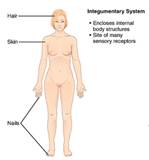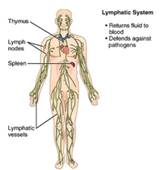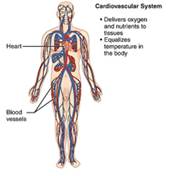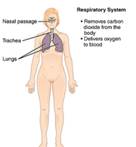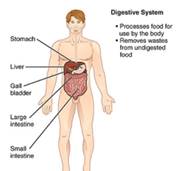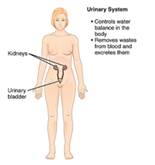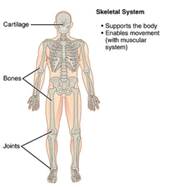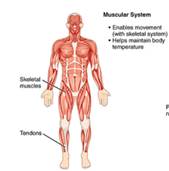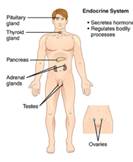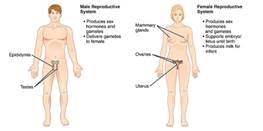Learn
- Organizational Levels
- Level 1: Cell
- Level 2: Tissue
- Level 3: Organ
- Level 4: Organ System
- Level 5: Organism
- Check for Understanding

Organizational Levels
The complexity of the human body functions at the different organizational levels. These levels of organization are from the simplest level (cells) to the more complex (organism). See Image 1 for a visual of these levels. The 5 levels are described in the list below.
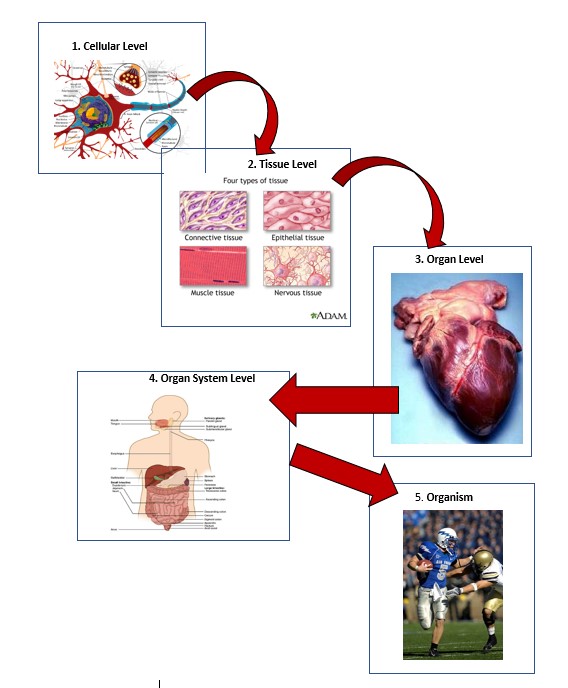
Image 1: 5 Levels of Organization

Level 1: Cell
Level 1. Cell – the basic, independently functional, unit of life composed of molecules and organelles (See Image 2). There are over 200 types of cells in the body making up the trillions of total cells of the body.
- organelles – functional units within a cell
- semipermeable membrane - membrane surrounding cells that allows certain molecules to pass through.
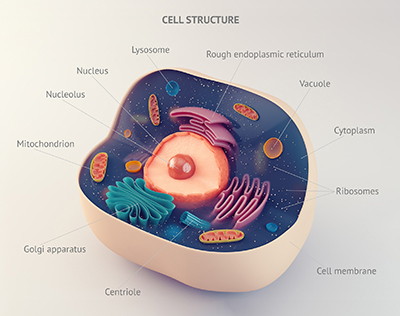
Image 2: The Cell and its Organelles

Level 2: Tissues
Level 2. Tissues - composed of 2 or more types of cells working together to perform a specific function. There are 4 types of tissue in the body (See Image 3 and Table 1 for the tissue types and their functions in the body):
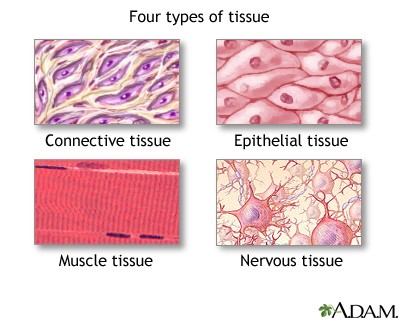
Image 3: The 4 Tissue Types
Table 1: Tissue Types and their Functions
1) Epithelial
- Function- Sheets of cells that protect and cover exterior surfaces of the body, lines internal cavities and passageways, and forms certain glands.
- Location- Coverings such as Skin
2) Connective
- Function- Binds the cells and organs of the body together and functions in the protection, support, and integration of all parts of the body.
- Location- bones, cartilage, tendons, and blood
3) Muscular
- Function- Contracts to provide movement.
- Location- heart, skeletal muscles, and muscle of organs
4) Nervous
- Function- Transmits electrical signals in the form of nerve impulses that communicate between different regions of the body.
- Location- brain, spinal cord, and nerves

Level 3: Organ
Level 3. Organ – structure of the body composed of two or more tissue types working together to perform a function (See Image 4).
- Examples – heart, stomach, lungs

Image 4: A Heart (Organ of the Body)

Level 4: Organ System
Level 4. Organ System - group of organs that work together to perform major functions or meet physiological needs of the body.
- There are 11 main organ systems in the body functioning to perform and maintain the living processes (See Table 2 for a list of these systems):
Table 2: Organ Systems and their Functions
|
Organ System |
Major Function |
Example Organs/Structures |
1) |
Integumentary |
Protection and thermoregulation of the body. |
Skin |
2) |
Immune/Lymphatic |
Filters clear fluid called lymph. Defends the body against pathogens (disease-causing agents). |
Lymph nodes White blood cells |
3) |
Cardiovascular |
Circulates blood around the body delivering oxygen and nutrients to cells and carrying waste products away. |
Heart |
4) |
Respiratory |
Movement of air and exchange of gases. |
Lungs |
5) |
Digestive |
Mechanical and chemical breakdown of nutrients, absorption of nutrients, and elimination of wastes. |
Stomach |
6) |
Urinary
|
Filters the blood of toxins, and controls water balance. |
Kidneys |
7) |
Skeletal |
Gives the body structure, protects organs, helps with movement, and produces blood cells. |
Bones |
8) |
Muscular |
Muscles |
|
Nervous |
Receives information (sensory), processes it, and sends out instructions. |
Brain |
|
10) |
Endocrine
|
Provides chemical communications within the body by secreting hormones. |
Glands all over the body – such as pituitary, adrenal, and thyroid gland |
11) |
Reproductive |
Required to produce offspring and production of sex hormones. |
Female-Ovaries, vaginal canal, uterus Male – testes, penis |

Level 5: Organism
Level 5. Organism – the living being that has a cellular structure and can independently perform all physiologic functions necessary for life (See Image 5).

Image 5: The Human Organism in Action

Check for Understanding
![]() Check for understanding:
Check for understanding:
-Which of the following are the most basic units of function in the body?
A. Cells
B. Membrane
C. Tissues
D. Organs
-What is the correct order of the organizational level of the human body from most simple to complex?
-Which of the 11 organ systems of the body functions by secreting hormones? The pituitary gland is a part of it.
-Which of the four tissue types in the body are located in bones and cartilage?
